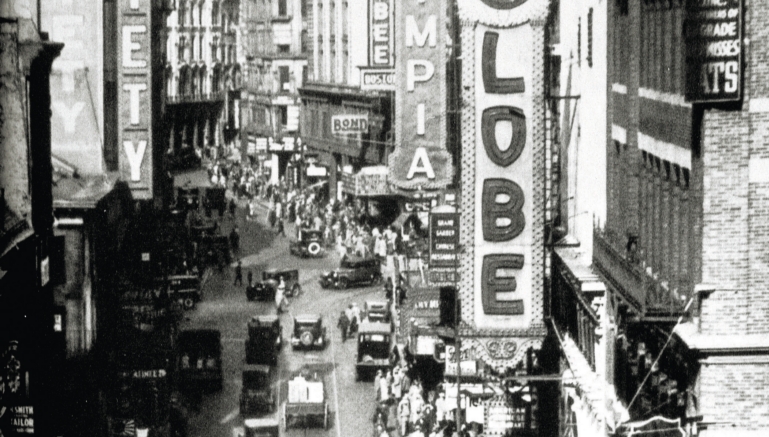
Before the Combat Zone, lower Washington Street was Gay Times Square, a mecca of bright lights, entertainment and a tolerance for life beyond the societal norms of heterosexuality.
In
the early half of the 20th century, Washington Street, between Essex
and Kneeland Streets, was home to numerous theaters and bars, making it a
prime entertainment destination.
Prior
to being plagued with strip joints with names like The Naked i Cabaret
and the Pussycat Lounge, the neighborhood was home to Playland, the
Petty Lounge and Touraine Cafe. The gathering places drew an LGBTQ
crowd, while the local theaters, such as the Stuart Theater and the
Pilgrim, created a show-business atmosphere that New York’s Times Square
is known for.
Many of
the bar owners in the area often used bribery or connections with
organized crime to keep police from raiding their establishments,
according to research from The History Project, a Boston-based LGBTQ
history organization.
In
the 1950s and 1960s, threats of persecution and prosecution kept the
LGBTQ community underground, making many of the bars on Washington
Street appealing.
The
LGBTQ community has historically relied upon bars as gathering places
where one could safely be open about sexuality, especially when meeting
other people who might secretly be homosexual or bisexual.
“You
had to pick up signals, indirect things,” said former South End
resident Lois Johnson, referring to the difficult methods of meeting
people outside of “safe” bars. “If you went to a place with a lot of
other gay people, you felt comfortable.”
The
transformation of Gay Times Square into the Combat Zone was, in part, a
result of the redevelopment of Scollay Square into Government Center.
Prior to the urban renewal effort, Scollay Square was home to many of
the city’s seedier bars and entertainment establishments. Many
businesses in the area that did not shut down relocated to Washington
Street.
This led to
the proliferation of strip clubs and pornographic movie theaters in the
area, which changed the district into what became known as the Combat
Zone. Both because the increase in vice attracted violent crime and
because the increase in scantily-clad women attracted more military men
on leave.
A desire to
avoid the crime of the Combat Zone and the gradual increase in societal
tolerance for the LGBTQ community contributed to the establishment of
new gathering places in the South End into the 1980s, opening a new
chapter in the history of Boston’s LGBTQ community.